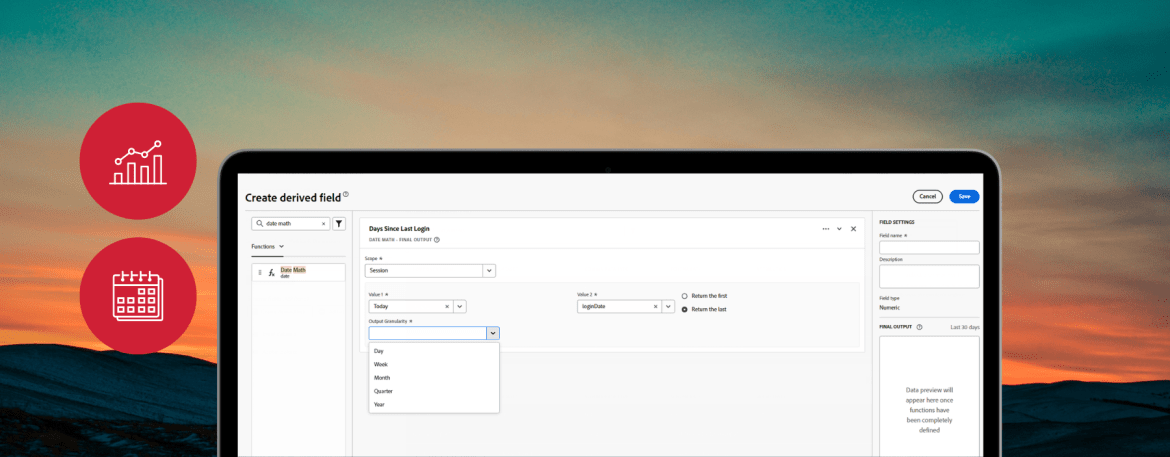Adobe CJA Date Math: Calculate Date Time Differences In Reporting

Tushar Varshney
Adobe Solutions Architect, Northern
Adobe gave the analytics world the best fall gift there could be, a new capability in Derived Fields called Date Math. You can now create derived fields from two or more dates and output time in different granularities.
People who have worked with implementation requests such as ‘Time taken to…’ will understand the gravity of this new feature Adobe silently released in the first week of September.
Adobe shows off this new derived field capability with a common use case of ‘Search to Order (Minutes).’ It looks almost magical to people who have previously worked with implementation and tried to recreate this same thing, using cookies and implementation markers.

With this recent Customer Journey Analytics (CJA) update, users can now calculate time-based metrics directly in Analytics - and trust the results. This means we can easily measure things like:
- Time to convert – how long it takes from a customer’s first visit to their first purchase
- Engagement recency – how many days since a user last logged in
- Subscription timelines – how many days remain until a subscription expires
- Recovery opportunities – how many days since a cart was abandoned
Even more importantly, we can now reliably track the total time taken across the entire customer journey, helping teams spot delays, optimize funnels, and improve experiences.
Beyond these examples, Adobe also demonstrated how Date Math can be combined with other functions - like the Case When function - to capture timestamps for almost any event or value in the customer journey, then calculate the differences between them.
Changing the session duration was always an option in Adobe Analytics, as well as in Adobe CJA, however now with Date Math, you can very easily create multiple definitions of session without breaking your default or OOTB session definition.
A great point was brought up during an internal discussion about this being extremely important for websites with long user sessions that don’t necessarily fit the OOTB definition from Adobe. A prime example is Netflix, where the customer stays active on the site with minimal to no interactions. Another example would be sports sites which remain open in the background and only see focus every once in a while.
This function takes several inputs and has the ability to look across scopes, meaning you can set it to only look at the difference between two date-time fields in a Session, or for a Person (Visits and Unique Visitors).
It pulls two date-time fields from your dataset, and you can then anchor one date to rolling ‘today’ or ‘now’ values, or anchor it to a specific date in your calendar. This opens up possibilities to create metrics like:
- Orders since the launch of a campaign (Today - CampaignLaunchDate)
- Days since last order (Today - LastOrderDate)
Replicating this seemingly simple metric outside of Adobe CJA can be extremely difficult and technology- and resource-exhaustive. This single feature brings enough value to Adobe customers to finally make the move to Adobe CJA and a full blown AEP implementation.
In a way, Date Math completes the picture Adobe has been trying to paint for some time, highlighting the potential of Adobe CJA. And as an added bonus, in the same release, they also introduced Depth and Typecast as functions to derived fields.

Ready to see how Date Math can uncover hidden delays in your customer experience? Let’s explore it together - contact us today.
Stay informed, sign up for our newsletter.

